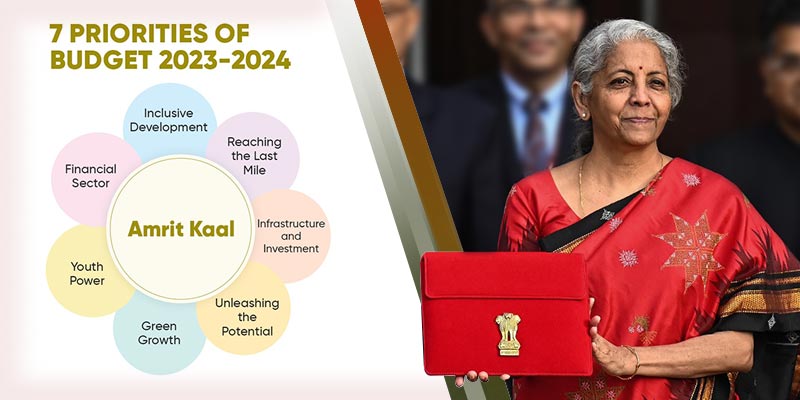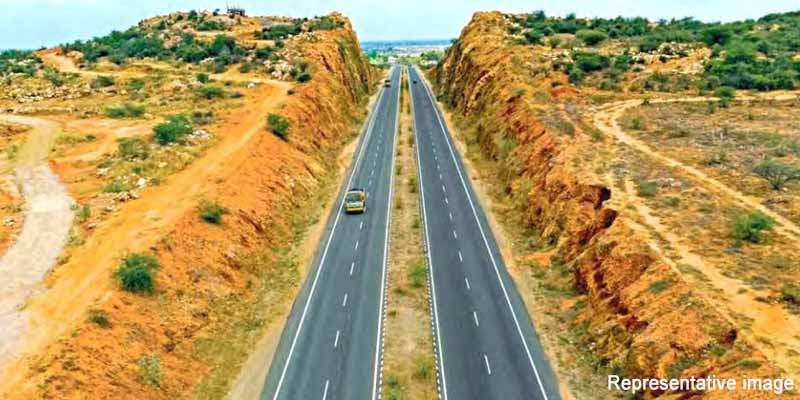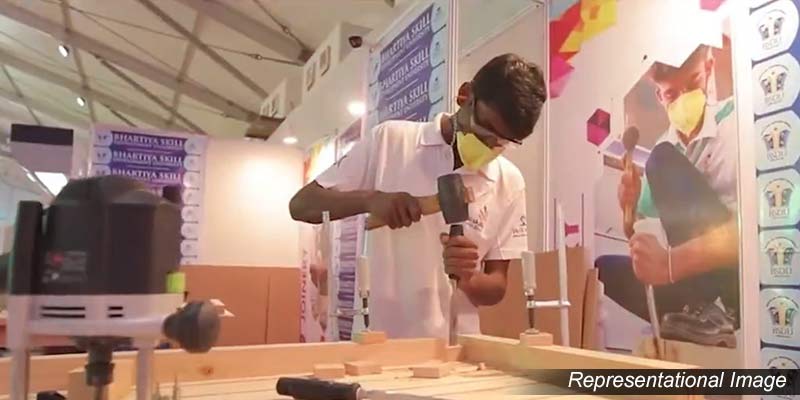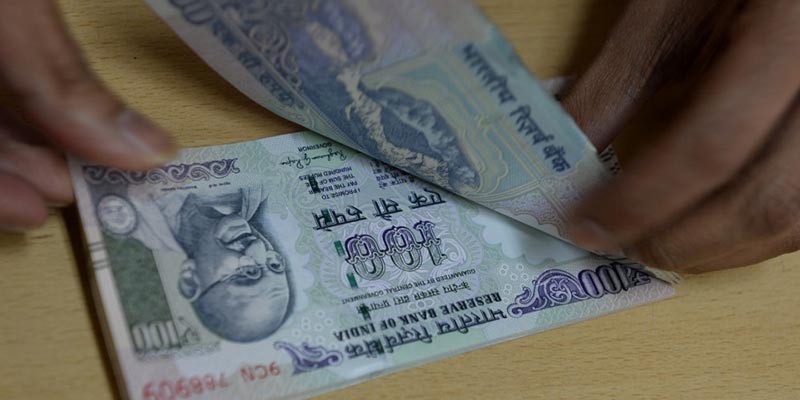- India
- Feb 01
Seven focus areas of Budget 2023-24
• Finance Minister Nirmala Sitharaman presented the Union Budget 2023-24 in the Parliament on February 1.
• Her Budget for the financial year beginning April 2023 is the Modi government’s 11th straight Budget since 2014 (including one interim Budget presented ahead of general elections in 2019).
• This is the last full Budget of the second term of the BJP-led NDA government ahead of the general elections in 2024.
• Sitharaman presented her fifth full Budget after she took over as Finance Minister in July 2019. She presented her maiden Budget on July 5, 2019.
Sitharaman said that the Budget adopts seven priorities to guide India through the Amrit Kaal.
They are:
I. Inclusive Development
II. Reaching the Last Mile
III. Infrastructure and Investment
IV. Unleashing the Potential
V. Green Growth
VI. Youth Power
VII. Financial Sector.
• Amrit Kaal is described by the government as the 25-year period culminating in the centenary of India's independence.
• Sitharaman said seven priorities of the Budget complement each other and act as the ‘Saptarishi’ guiding us through the Amrit Kaal.
I. Inclusive Development
1) Agriculture and Cooperation
a) Digital Public Infrastructure for Agriculture: It will be built as an open source, open standard and interoperable public good. This will enable inclusive, farmer-centric solutions through relevant information services for crop planning and health, improved access to farm inputs, credit, and insurance, help for crop estimation, market intelligence, and support for growth of agri-tech industry and startups.
b) Agriculture Accelerator Fund: It will be set-up to encourage agri startups by young entrepreneurs in rural areas. The Fund will aim at bringing innovative and affordable solutions for challenges faced by farmers. It will also bring in modern technologies to transform agricultural practices, increase productivity and profitability.
c) Enhancing productivity of cotton crop: To enhance the productivity of extra-long staple cotton, the government will adopt a cluster-based and value chain approach through Public Private Partnerships (PPP).
d) Atmanirbhar Horticulture Clean Plant Programme: The government will launch Atmanirbhar Clean Plant Programme to boost availability of disease-free, quality planting material for high value horticultural crops at an outlay of Rs 2,200 crore.
e) Global hub for millets: To make India a global hub for millets, the Indian Institute of Millet Research, Hyderabad will be supported as the Centre of Excellence for sharing best practices, research and technologies at the international level.
f) Agriculture credit: The agriculture credit target will be increased to Rs 20 lakh crore with focus on animal husbandry, dairy and fisheries.
2) Cooperation
For farmers, especially small and marginal farmers, and other marginalised sections, the government is promoting cooperative-based economic development model. The government has already initiated computerisation of 63,000 Primary Agricultural Credit Societies (PACS) with an investment of Rs 2,516 crore. In consultation with all stakeholders and states, model bye-laws for PACS were formulated enabling them to become multipurpose PACS. A national cooperative database is being prepared for country-wide mapping of cooperative societies.
The government will implement a plan to set up massive decentralised storage capacity. This will help farmers store their produce and realize remunerative prices through sale at appropriate times. The government will also facilitate setting up of a large number of multipurpose cooperative societies, primary fishery societies and dairy cooperative societies in uncovered panchayats and villages in the next five years.
3) Health and Education
a) Nursing Colleges: As many as 157 new nursing colleges will be established in co-location with the existing 157 medical colleges established since 2014.
b) Sickle Cell Anaemia Elimination Mission: A Mission to eliminate Sickle Cell Anaemia by 2047 will be launched. It will entail awareness creation, universal screening of seven crore people in the age group of 0-40 years in affected tribal areas, and counselling through collaborative efforts of central ministries and state governments.
c) Multi-disciplinary courses for medical devices: Dedicated multi-disciplinary courses for medical devices will be supported in existing institutions to ensure availability of skilled manpower for futuristic medical technologies, high-end manufacturing and research.
d) National Digital Library for children and adolescents: A National Digital Library for children and adolescents will be set-up for facilitating availability of quality books across geographies, languages, genres and levels, and device agnostic accessibility. States will be encouraged to set up physical libraries for them at panchayat and ward levels and provide infrastructure for accessing the National Digital Library resources.
II. Reaching the Last Mile
1) Aspirational Districts and Blocks Programme: Building on the success of the Aspirational Districts Programme, the government has recently launched the Aspirational Blocks Programme covering 500 blocks for saturation of essential government services across multiple domains such as health, nutrition, education, agriculture, water resources, financial inclusion, skill development, and basic infrastructure.
2) Pradhan Mantri PVTG Development Mission: To improve socio-economic conditions of the particularly vulnerable tribal groups (PVTGs), Pradhan Mantri PVTG Development Mission will be launched. This will saturate PVTG families and habitations with basic facilities such as safe housing, clean drinking water and sanitation, improved access to education, health and nutrition, road and telecom connectivity, and sustainable livelihood opportunities. An amount of Rs 15,000 crore will be made available to implement the Mission in the next three years under the Development Action Plan for the Scheduled Tribes.
3) Eklavya Model Residential Schools: In the next three years, the Centre will recruit 38,800 teachers and support staff for the 740 Eklavya Model Residential Schools, serving 3.5 lakh tribal students.
4) PM Awas Yojana: The outlay for PM Awas Yojana is being enhanced by 66 per cent to over Rs 79,000 crore.
III. Infrastructure & Investment
Investments in infrastructure and productive capacity have a large multiplier impact on growth and employment. The newly established Infrastructure Finance Secretariat will assist all stakeholders for more private investment in infrastructure, including railways, roads, urban infrastructure and power, which are predominantly dependent on public resources
1) Capital investment as driver of growth and jobs: Capital investment outlay is being increased steeply for the third year in a row by 33 per cent to Rs 10 lakh crore, which would be 3.3 per cent of GDP. This will be almost three times the outlay in 2019-20. 45. This substantial increase in recent years is central to the government’s efforts to enhance growth potential and job creation, crowdin private investments, and provide a cushion against global headwinds.
2) Effective Capital Expenditure: The direct capital investment by the Centre is complemented by the provision made for creation of capital assets through Grants-in-Aid to states. The ‘Effective Capital Expenditure’ of the Centre is budgeted at Rs 13.7 lakh crore, which will be 4.5 per cent of GDP.
3) Support to states for capital investment: The government has decided to continue the 50-year interest free loan to state governments for one more year to spur investment in infrastructure and to incentivise them for complementary policy actions, with a significantly enhanced outlay of Rs 1.3 lakh crore.
4) Railways: A capital outlay of Rs 2.40 lakh crore has been provided for the Railways.
5) Logistics: As many as 100 critical transport infrastructure projects, for last and first mile connectivity for ports, coal, steel, fertilizer, and food grains sectors have been identified. They will be taken up on priority with investment of Rs 75,000 crore, including Rs 15,000 crore from private sources.
6) Regional connectivity: As many as 50 additional airports, heliports, water aerodromes and advanced landing grounds will be revived for improving regional air connectivity.
7) Making cities ready for municipal bonds: Through property tax governance reforms and ring-fencing user charges on urban infrastructure, cities will be incentivised to improve their credit worthiness for municipal bonds.
8) Urban Infrastructure Development Fund: Like the Rural Infrastructure Development Fund (RIDF), an Urban Infrastructure Development Fund (UIDF) will be established through use of priority sector lending shortfall. This will be managed by the National Housing Bank, and will be used by public agencies to create urban infrastructure in Tier 2 and Tier 3 cities. States will be encouraged to leverage resources from the grants of the 15th Finance Commission, as well as existing schemes, to adopt appropriate user charges while accessing the UIDF. The government expects to make available Rs 10,000 crore per annum for this purpose.
9) Urban sanitation: All cities and towns will be enabled for 100 per cent mechanical desludging of septic tanks and sewers to transition from manhole to machine-hole mode. Enhanced focus will be provided for scientific management of dry and wet waste.
IV. Unleashing the Potential
1) Mission Karmayogi: The Centre, states and Union Territories are making and implementing capacity-building plans for civil servants. The government has also launched an integrated online training platform, iGOT Karmayogi, to provide continuous learning opportunities for lakhs of government employees to upgrade their skills and facilitate people-centric approach.
2) Ease of Doing Business: For enhancing ease of doing business, more than 39,000 compliances have been reduced and more than 3,400 legal provisions have been decriminalised. For furthering the trust based governance, the government has introduced the Jan Vishwas Bill to amend 42 Central Acts.
3) Centres of Excellence for Artificial Intelligence: To realise the vision of “Make AI in India and Make AI work for India”, three centres of excellence for artificial intelligence will be set up in top educational institutions.
4) National Data Governance Policy: To unleash innovation and research by startups and academia, a National Data Governance Policy will be brought out. This will enable access to anonymized data.
5) Simplification of Know Your Customer (KYC) process: The KYC process will be simplified by adopting a ‘risk-based’ instead of ‘one-size-fits-all’ approach.
6) Common business identifier: For the business establishments required to have a Permanent Account Number (PAN), the PAN will be used as the common identifier for all digital systems of specified government agencies. This will bring ease of doing business; and it will be facilitated through a legal mandate.
7) Vivad se Vishwas II: To settle contractual disputes of government and government undertakings, wherein arbitral award is under challenge in a court, a voluntary settlement scheme with standardised terms will be introduced. This will be done by offering graded settlement terms depending on pendency level of the dispute.
8) E-Courts: For efficient administration of justice, Phase-3 of the e-courts project will be launched with an outlay of Rs 7,000 crore.
9) DigiLocker: Fintech services in India have been facilitated by our digital public infrastructure including Aadhaar, PM Jan Dhan Yojana, Video KYC, India Stack and UPI. To enable more fintech innovative services, the scope of documents available in DigiLocker for individuals will be expanded. An Entity DigiLocker will be set up for use by MSMEs, large business and charitable trusts. This will be towards storing and sharing documents online securely, whenever needed, with various authorities, regulators, banks and other business entities.
10) 5G Services: As many as 100 labs for developing applications using 5G services will be set up in engineering institutions to realise a new range of opportunities, business models, and employment potential.
11) Lab Grown Diamonds: India is a global leader in cutting and polishing of natural diamonds, contributing about three-fourths of the global turnover by value. With the depletion in deposits of natural diamonds, the industry is moving towards Lab Grown Diamonds (LGDs) and it holds huge promise. LGD is a technology-and innovation-driven emerging sector with high employment potential. These environment-friendly diamonds which have optically and chemically the same properties as natural diamonds. To encourage indigenous production of LGD seeds and machines and to reduce import dependency, a research and development grant will be provided to one of the IITs for five years. The Budget also proposed to nullify the basic customs duty (BCD) on seeds used in the manufacturing of lab grown diamonds from the current 5 per cent.
V. Green Growth
India is moving forward firmly for the ‘panchamrit’ and net-zero carbon emission by 2070 to usher in green industrial and economic transition. The Budget builds on the focus on green growth.
1) Green Hydrogen Mission: The recently launched National Green Hydrogen Mission, with an outlay of Rs 19,700 crore, will facilitate transition of the economy to low carbon intensity, reduce dependence on fossil fuel imports, and make the country assume technology and market leadership in this sunrise sector. The target is to reach an annual production of 5 Million Metric Tonnes by 2030.
2) Energy transition: This Budget provides Rs 35,000 crore for priority capital investments towards energy transition and net-zero objectives, and energy security by the ministry of petroleum & natural gas.
3) Energy storage projects: To steer the economy on the sustainable development path, Battery Energy Storage Systems with capacity of 4,000 MWH will be supported with Viability Gap Funding.
4) Renewable energy evacuation: The Inter-state transmission system for evacuation and grid integration of 13 GW renewable energy from Ladakh will be constructed with investment of Rs 20,700 crore including central support of Rs 8,300 crore.
5) Green Credit Programme: For encouraging behavioural change, a Green Credit Programme will be notified under the Environment (Protection) Act. This will incentivise environmentally sustainable and responsive actions by companies, individuals and local bodies, and help mobilise additional resources for such activities.
6) PM-PRANAM: “PM Programme for Restoration, Awareness, Nourishment and Amelioration of Mother Earth” will be launched to incentivise states and UTs to promote alternative fertilizers and balanced use of chemical fertilizers.
7) GOBARdhan scheme: 500 new ‘waste to wealth’ plants under GOBARdhan (Galvanizing Organic Bio-Agro Resources Dhan) scheme will be established for promoting circular economy.
8) Bhartiya Prakritik Kheti Bio-Input Resource Centres: Over the next three years, the government will facilitate one crore farmers to adopt natural farming. For this, 10,000 Bio-Input Resource Centres will be set up, creating a national-level distributed micro-fertilizer and pesticide manufacturing network.
9) MISHTI: Building on India’s success in afforestation, ‘Mangrove Initiative for Shoreline Habitats & Tangible Incomes’ (MISHTI), will be taken up for mangrove plantation along the coastline and on salt pan lands, wherever feasible, through convergence between MGNREGS, CAMPA Fund and other sources.
10) Amrit Dharohar: The government will promote unique conservation values through Amrit Dharohar, a scheme that will be implemented over the next three years to encourage optimal use of wetlands, and enhance biodiversity, carbon stock, eco-tourism opportunities and income generation for local communities.
11) Vehicle replacement: Replacing old polluting vehicles is an important part of greening the economy. In furtherance of the vehicle scrapping policy mentioned in Budget 2021-22, the government has allocated adequate funds to scrap old vehicles of the central government. States will also be supported in replacing old vehicles and ambulances.
VI. Youth Power
1) Pradhan Mantri Kaushal Vikas Yojana 4.0: It will be launched to skill lakhs of youth within the next three years. On-the-job training, industry partnership, and alignment of courses with needs of industry will be emphasized. The scheme will also cover new age courses for Industry 4.0 like coding, AI, robotics, mechatronics, Internet of Things, 3D printing, drones, and soft skills.
2) Skill India Digital Platform: The digital ecosystem for skilling will be further expanded with the launch of a unified Skill India Digital platform for:
a) Enabling demand-based formal skilling.
b) Linking with employers including MSMEs.
c) Facilitating access to entrepreneurship schemes.
3) National Apprenticeship Promotion Scheme: To provide stipend support to 47 lakh youth in three years, Direct Benefit Transfer under a pan-India National Apprenticeship Promotion Scheme will be rolled out.
4) Unity Mall: States will be encouraged to set up a Unity Mall in their state capital or most prominent tourism centre or the financial capital for promotion and sale of their own ODOPs (One District, One Product), GI products and other handicraft products, and for providing space for such products of all other states.
VII. Financial Sector
1) Credit Guarantee for MSMEs: The revamped credit guarantee scheme for MSMEs will take effect from April 1, 2023 through infusion of Rs 9,000 crore in the corpus. This will enable additional collateral-free guaranteed credit of Rs 2 lakh crore. Further, the cost of the credit will be reduced by about 1 per cent.
2) National Financial Information Registry: A national financial information registry will be set up to serve as the central repository of financial and ancillary information. This will facilitate efficient flow of credit, promote financial inclusion, and foster financial stability. A new legislative framework will govern this credit public infrastructure, and it will be designed in consultation with the RBI.
3) Improving governance and investor protection in banking sector: To improve bank governance and enhance investors’ protection, certain amendments to the Banking Regulation Act, the Banking Companies Act and the Reserve Bank of India Act are proposed.
4) Central Data Processing Centre: A Central Processing Centre will be set up for faster response to companies through centralised handling of various forms filed with field offices under the Companies Act.
5) Azadi Ka Amrit Mahotsav Mahila Samman Bachat Patra: A one-time new small savings scheme, Mahila Samman Savings Certificate, will be made available for a two-year period up to March 2025. This will offer deposit facility up to Rs 2 lakh in the name of women or girls for a tenor of two years at fixed interest rate of 7.5 per cent with partial withdrawal option.
6) Senior Citizen Savings Scheme: The maximum deposit limit for Senior Citizen Savings Scheme will be enhanced from Rs 15 lakh to Rs 30 lakh. The maximum deposit limit for Monthly Income Account Scheme will be enhanced from Rs 4.5 lakh to Rs 9 lakh for single account and from Rs 9 lakh to Rs 15 lakh for joint account.
Manorama Yearbook app is now available on Google Play Store and iOS App Store







